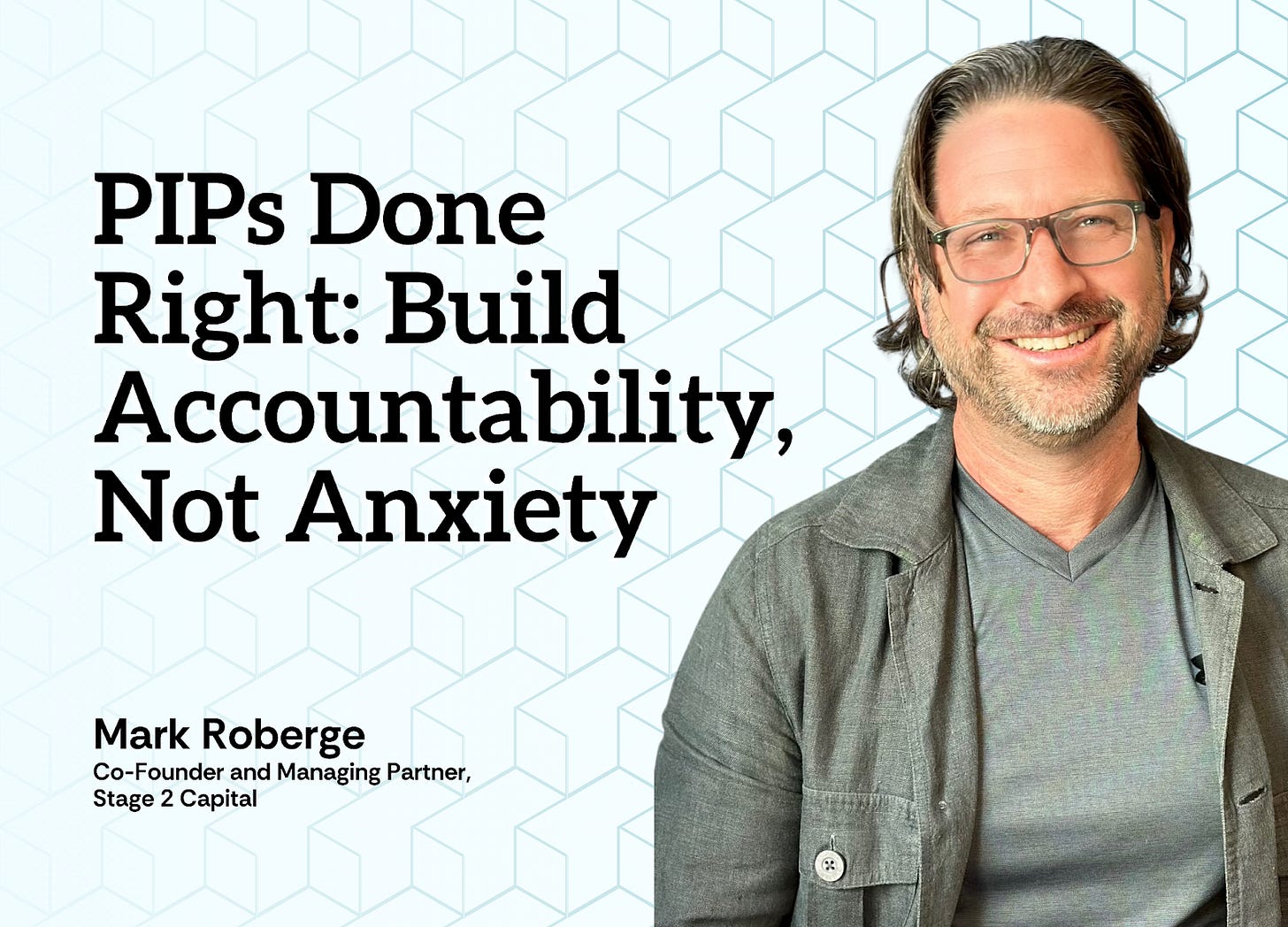PIPs Done Right: Build Accountability, Not Anxiety
Make performance plans a cultural asset, not a morale risk.
DEAR STAGE 2: We’re scaling our sales team and trying to establish clear expectations. I’m worried that putting someone on a PIP will hurt morale. Any best practices to share around the PIP process? ~SLOW TO FIRE
DEAR SLOW TO FIRE: A lot of founders hesitate to pull the trigger on Performance Improvement Plans (PIPs) because they’re afraid it will demoralize the team. But handled well, a PIP signals that you’re building a team where expectations are clear and performance is respected.
I recently dug into this topic with my Partner, Mark Roberge, who happens to be the founding CRO at HubSpot. He shared his philosophy and advice on using PIPs to strengthen the sales culture. Read on for his take on how to think about it.
PIPs Set the Standard
Too often, terminations happen based on a “gut feel” from leadership, and that’s where culture takes a hit. If someone is let go without a clear process or feels ambushed or surprised by the decision, even your top performers will start to question their own job security.
Key Takeaway #1: Standardize the PIP process
Everyone should know the rules of the road; it should be a standard part of onboarding..
The process should be quantitative, consistent, and repeatable.
Avoid “behind-the-scenes” decisions that erode trust.
At HubSpot, Mark was running a team where the average rep closed ~10 deals/mo. That transactional sales environment is a great place to implement one consistent PIP process across the entire org. Their standard is six mos of ramp time followed by monthly check-ins. Each month, reps were evaluated on their rolling four-month quota attainment. If the average fell below 90%, then you’re on a 30-day PIP.
“It was the same for everyone, regardless of team or tenure. That consistency is what built a performance-first culture.”
Don’t Fear the Morale Hit, Fear Ambiguity
Contrary to what many assume, Mark argues that putting someone on a clear, fair PIP can actually improve team morale. Why? Because it shows there’s no place to hide.
When someone who’s clearly underperforming sticks around indefinitely, it frustrates everyone, especially your top performers. Clear guidelines on performance set the standard and ensure everyone works to earn their place on the team.
Key Takeaway #2: A clear bar motivates and aligns the team.
Public PIP processes show the team that you’re serious about outcomes.
They eliminate favoritism and politics.
They reinforce the idea that performance earns your seat at the table.
Building a high-performance culture in sales should feel like assembling a professional sports team. Mark compared it to baseball: “You don’t stay on the Red Sox because people like you. If you’re batting.125 with 200 strikeouts, you’re not going to last. If you do, it tarnishes the whole team.”
Focus PIPs on Outcomes, Not Activity
Mark was clear: PIPs should be based on results. If someone’s missing their number, check the inputs. But if they’re hitting quota, don’t micromanage them.
I couldn’t agree more. The reality is that some reps find creative ways to drive results - maybe we can learn from them, maybe they are outliers. Like comp plans, you want to ensure that your performance plans incentivize the right behavior – healthy revenue contribution.
Key Takeaway #3: PIPs are about outcomes
Don’t PIP someone for low activity if they’re hitting their number.
Don’t avoid a PIP because someone is “trying hard.” If they’re not closing, they’re not succeeding.
It’s easier to focus on outcomes in a transactional sales environment, but even in longer sales cycles you can still compare pipeline growth and progress. With an enterprise motion, you need a longer ramp time to build pipeline and close deals. Consider adjusting your expectations on measurement for these folks, but again…be clear up front. An example for an enterprise rep might be something like four quarters of ramp, with the expectation of hitting quota by the fifth quarter in seat. Ultimately, PIPs are a tool to maintain performance, not avoid turnover. If someone’s not improving despite coaching, it’s time to open the slot. If you want to dig deeper on building sales culture, check out the Science of Scaling YouTube channel.
Until next week!



